
The predators? They include lady beetles (aka ladybugs), spiders, milkweed bugs, assassin bugs, wasps and birds. Parasitoids? The major ones here in our family's pollinator garden in Vacaville are the tachinid flies. They lay their eggs in or on your caterpillars or on the leaves where your caterpillars will be feeding. The tachinid eggs hatch and develop into larvae that will eat your host from the inside out. (We like tachinid flies when they lay eggs in such pests as tomato hornworms or cabbage loopers.)
So we have these magical, miraculous monarch moments in our indoor nursery (the kitchen counter) and I'm sort of the midwife who lends a helping hand. The 15 eggs I collected have hatched and are now second or third-instars. Monarchs go through five instars before they pupate.
When the egg hatches, the caterpillar is a first instar. It's a pale gray, light green or transparent, and is easily distinguishable by its black head. The first thing it does is eat its eggshell. Then it starts devouring milkweed.
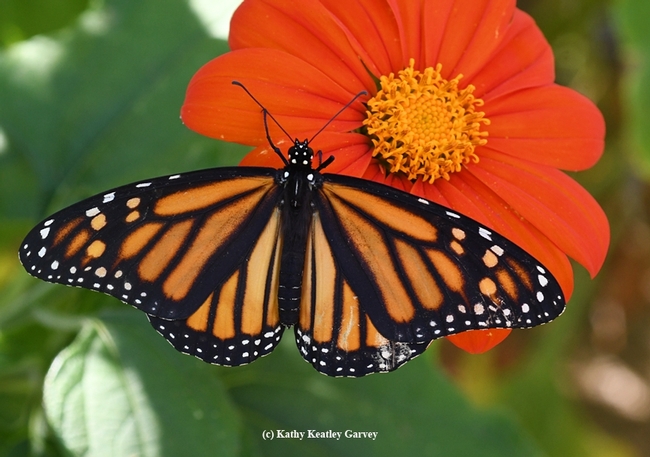
With the third instar, the caterpillar coloring is darker and more distinct. "The third (and later) instars respond to disturbance by dropping off the leaf and curling into a tight ball," according to Monarch Joint Adventure. "Monarch biologist Fred Urquhart called this behavior playing possum."
Some of our tiny 'cats are still in those lidded salsa container cups, with a "floor" of a damp tissue to keep the fresh leaf from drying out. This is how naturalist Greg Kareofelas, associate of the Bohart Museum of Entomology, UC Davis, does it. (See Bug Squad blog). He inserts one 'cat per container. And it's important to change the leaves and empty the frass (droppings) at least once, preferably twice a day. The 'cats can skeletonize the leaves quickly. (Like ravenous teen-agers, they'll eat more than you think they will!)
When the 'cats become third-instars, like graduating from the first grade to the third grade, we change their environment. Out of the lidded containers they go, and onto leaves tucked into water-filled floral tubes. We place the tubes inside a netted, zippered butterfly habitat container, like the ones that the Bohart Museum of Entomology at UC Davis (temporarily closed due to the COVID-19 pandemic) sells. If the caterpillars are not confined, they will wander away to pupate--perhaps on your cell phone cord as one of ours, an Indiana Jones or Indiana Joan, did.
Usually we raise monarchs from caterpillars, not eggs, because the 'cats are easier to detect. (This Bug Squad blog offers some of our "monarch starting kit" tips. Key to the starting kit is a heavy, flat-bottomed, narrow-necked tequila bottle.)
Meanwhile, the 15 'cats are doing what 'cats do--they are eating. They're safe and sound and out of reach of the predators and parasitoids and other threats that could kill them.
Once the adults are released into the neighborhood, though, they are fair game for birds, praying mantids and the like. Maybe some monarchs from our magical, miraculous monarch nursery will make it to the overwintering sites along coastal California and the cycle will begin again.
Attached Images:
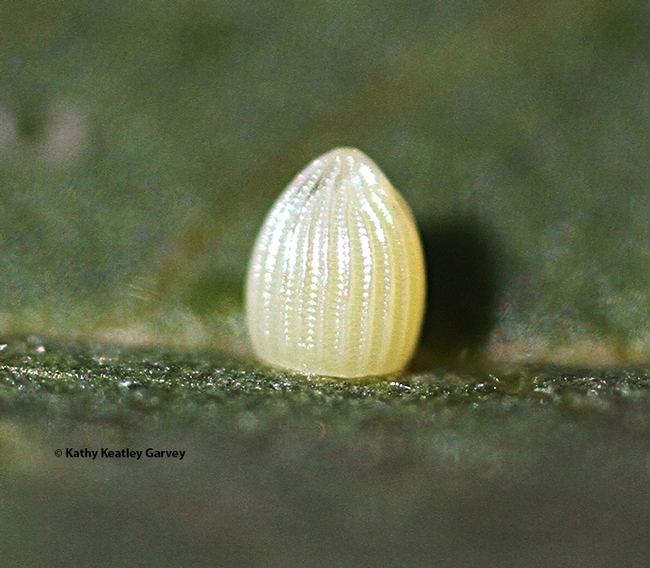
A monarch egg. Soon it will hatch. (Photo by Kathy Keatley Garvey)
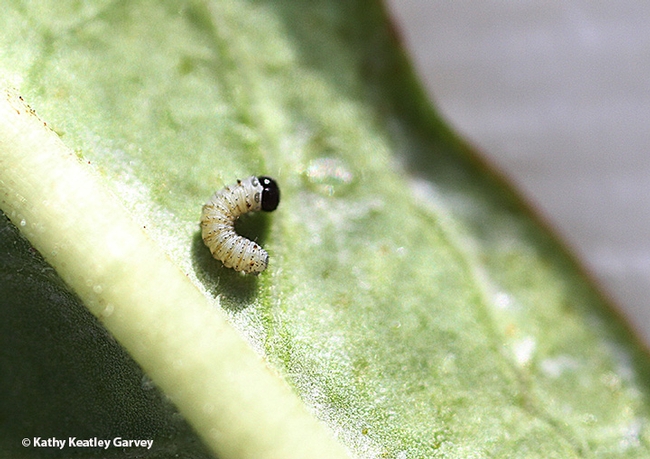
This larva or caterpillar has just hatched. Note the black head. (Photo by Kathy Keatley Garvey)
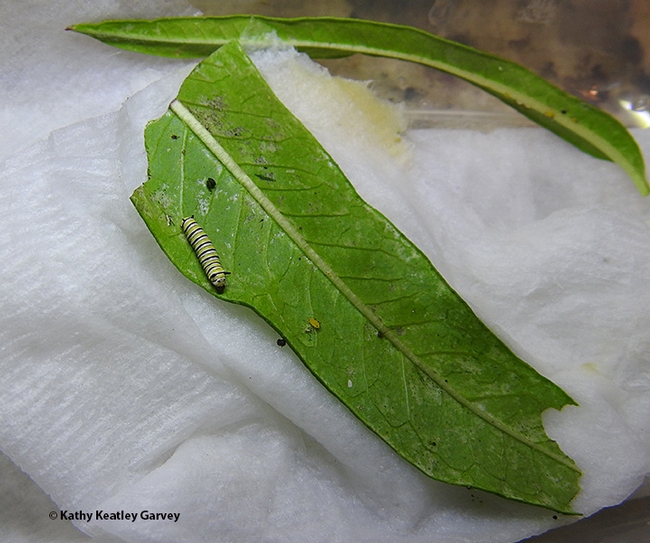
Growing, growing, growing. Now all the caterpillar has to do is eat, eat, eat. (Photo by Kathy Keatley Garvey)
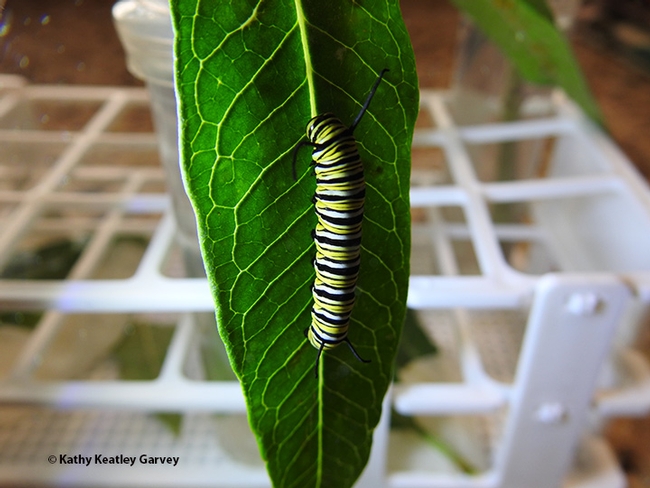
This third instar caterpillar rests on a leaf in its new environment. It was just removed from a lidded container--lidded to keep the milkweed leaf damp. Otherwise, it will dry out. (Photo by Kathy Keatley Garvey)
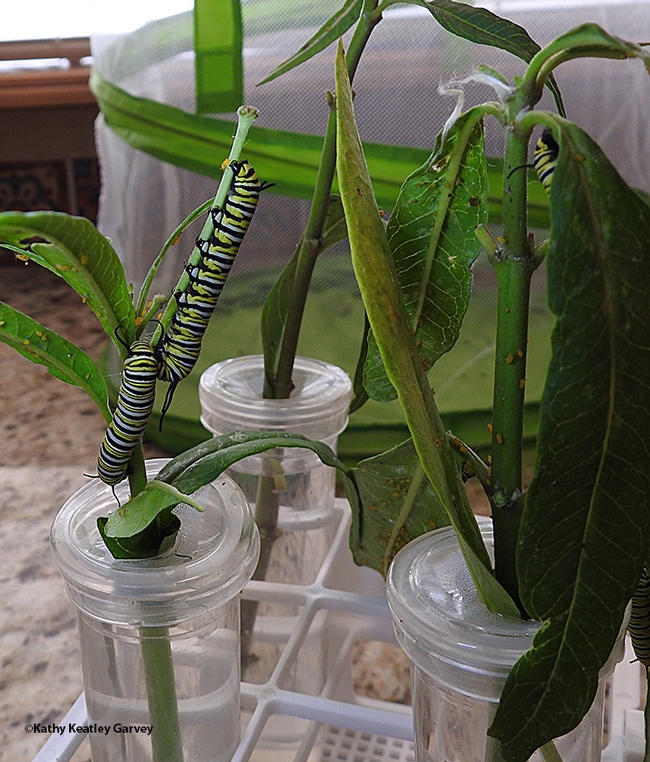
Three monarch caterpillars munching away on milkweed. Two of the 'cats just encountered one another. (Photo by Kathy Keatley Garvey)